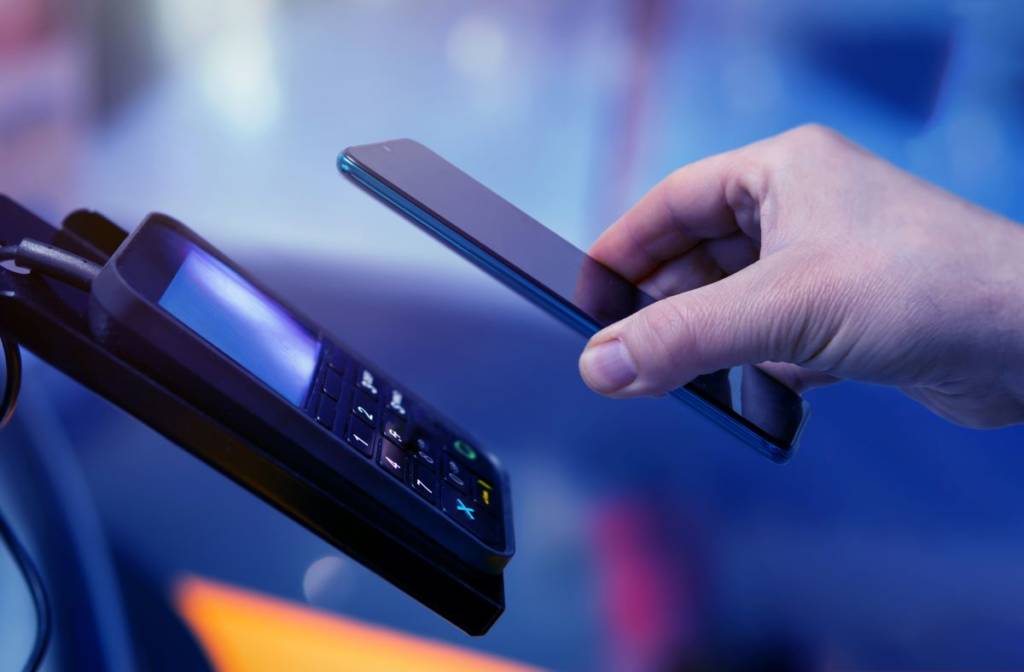Chris Taine: The pandemic has greatly accelerated digital transformation and trends we were expecting to emerge over the next few years; they are now coming to fruition after what seems like a few months. A big one is the rapid growth of contactless payments methods – and a growing desire from consumers to use them.
Dave Birch: You’re certainly right about the acceleration of trends in digital transformation, including financial services and payments. The way I look at it, we – as an industry – already knew where we were heading, and the virus has given us a nudge downhill to get us rolling. But at the same time, as we’ve picked up speed, the direction has changed slightly. Specifically, with regard to contactless payments, in reality we’re moving to contact-“free” payments and not just contact-“less.” It’s been obvious for quite some time if you spend time in a place like London; once people were accustomed to using contactless payments for things like getting on the bus, then they grew comfortable using it for cups of coffee and it grew from there.
If you look carefully at what’s happening now though, through a pandemic lens, you see a slightly different picture emerging. I recently went to the garden center near my house, ordered via a QR code displayed at the table, which also accepts payment through the app. Similarly in pubs, at least in the big pub chains, they’re all using these apps now. This isn’t just a stop gap measure though, it’s a better experience. And it’s a fundamental shift in the experience because it takes us from what we think of as the checkout experience and replaces it with the check-in experience. When people check in, it means you know who they are, and can deliver a much better and more personalized service to them.
One of the big implications for payments is that adding a new payments mechanism within an app is vastly less complex than adding it at a conventional point of sale. I think we can expect to see a proliferation of new payment types on the back of these new types of experiences.
CT: What are some of the new payment types that you think will emerge, and how will the unique conditions and forces of the pandemic actually impact the uptake of those new ways to pay?
DB: I’m convinced people haven’t paid enough attention to Request to Pay, which has just gone live in the U.K. and in Europe and will arrive in the U.S. with FedNow. Again, Request to Pay is so interesting because it changes the experience; changes the relationship between the customer and the merchant. Billing is the canonical example that everybody uses, which can include things like gym subscriptions. Well, Request to Pay gives me the option to pay my monthly fee when I receive a reminder, delay it, pay it in installments…greater flexibility for me as a customer. But crucially, this is all handled through the data-rich ISO 20022 messaging standard, which makes useful information easily accessible to consumers – it’s an attractive proposition for all parties. I personally think that it will begin to extend beyond billing into the retail point of sale for the same reasons as the transition to contact-free payments. Imagine what that means for a market stall – no need for a point-of-sale terminal at all, with a QR code becoming the prompt for a standard Request-to-Pay mechanism.
CT: How will the emergence of Request to Pay start to intersect with some of the other big trends we’re seeing?
DB: Look a bit further downstream, you begin to see the collision between open banking, Request to Pay and this contact-free payments environment. Until now, open banking really hasn’t delivered much in the consumer space, but it will be enhanced when Request to Pay comes into common usage, which will help present a more detailed picture of financial health.
To make a consumer’s life better, you need to see not just what’s in their bank account or their credit card statements, but also pensions and mortgages. That brings us into the world of open finance and APIs, which then intersects with the rich data you’re getting from ISO 20022 plus the expanding capabilities of AI and machine learning. The financial health narrative I think is a compelling one, but underneath it will sit the Request-to-Pay mechanics, which in turn will be driven forward by the adoption of contact-free payments. And of course, the pandemic is a principal driver of that contact-free adoption.
CT: It’s interesting the way you see those developments as interrelated and part of the bigger picture – outside of this, are there any other trends that you think will define post-pandemic payments?
DB: There’s something else major going on at the moment, which has been accelerated through the global health crisis, and that is the discussion of digital currency. When I put pen to paper for my book “The Currency Cold War,” it was really to help people think about the three-to-five-year strategic horizon, but actually that’s all changed. We saw the People’s Bank of China launch their digital currency in four major cities. Now you see people discussing the digital dollar and the Bank of England consultation paper on digital sterling is out. Plus Canada, Sweden…there’s lots of experimentation. Of course, central banks may look at it and then decide not to do anything, but I think that the experiences of the pandemic – particularly distribution of government benefits to citizens – have highlighted that the lack of a digital currency can be a hindrance.
This opens up the possibility that we have two parallel infrastructures, much sooner than I would have thought. We’ll have electronic money infrastructure – what we conventionally think about – and in parallel the electronic cash infrastructure, which will be digital currency running over the internet. So digital currency has really come up the agenda in the last few months and I believe will be a feature of the post-pandemic payments world.
Catch up on the rest of the content from ACI Edge Virtual: Banks & Intermediaries



